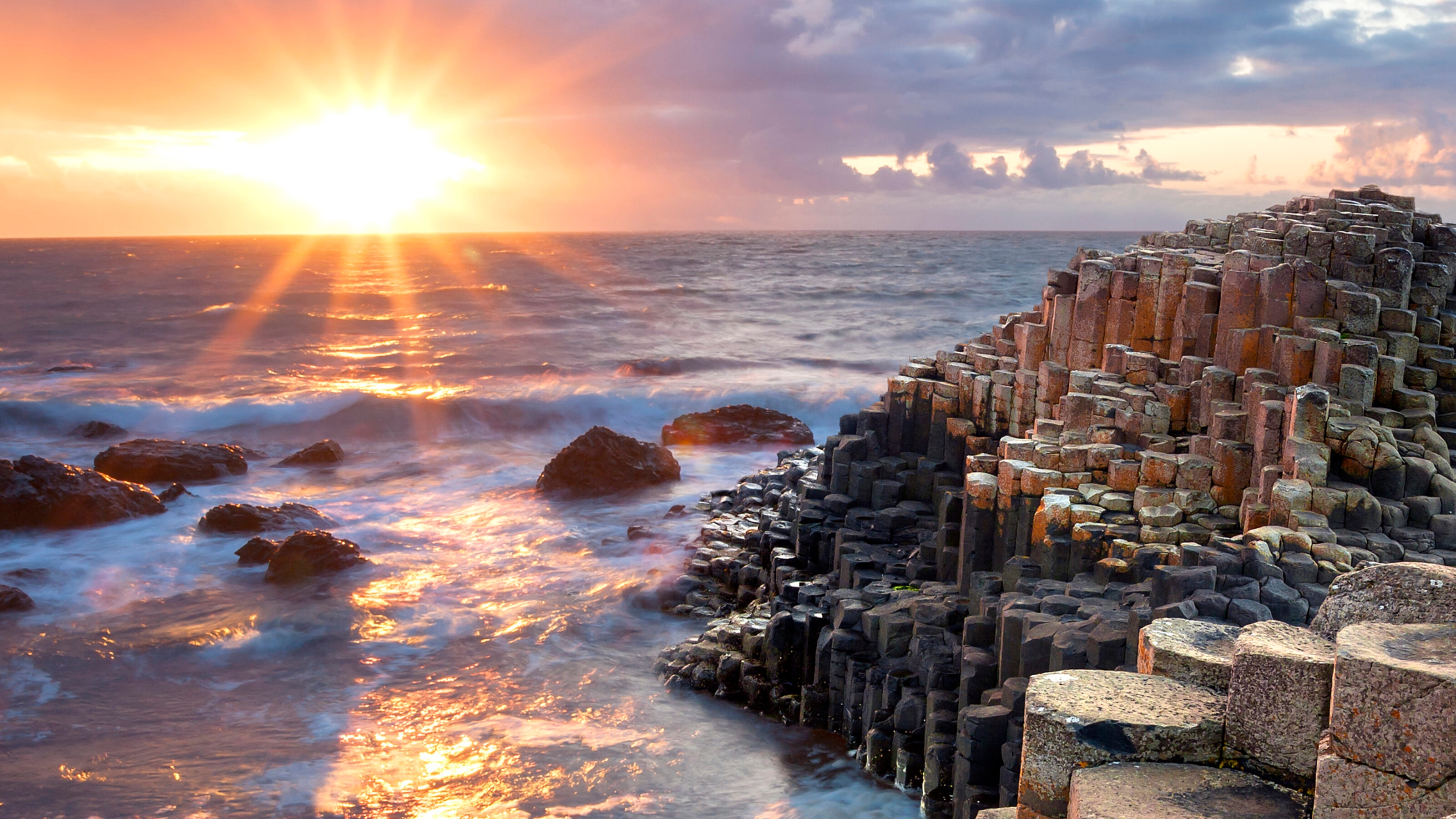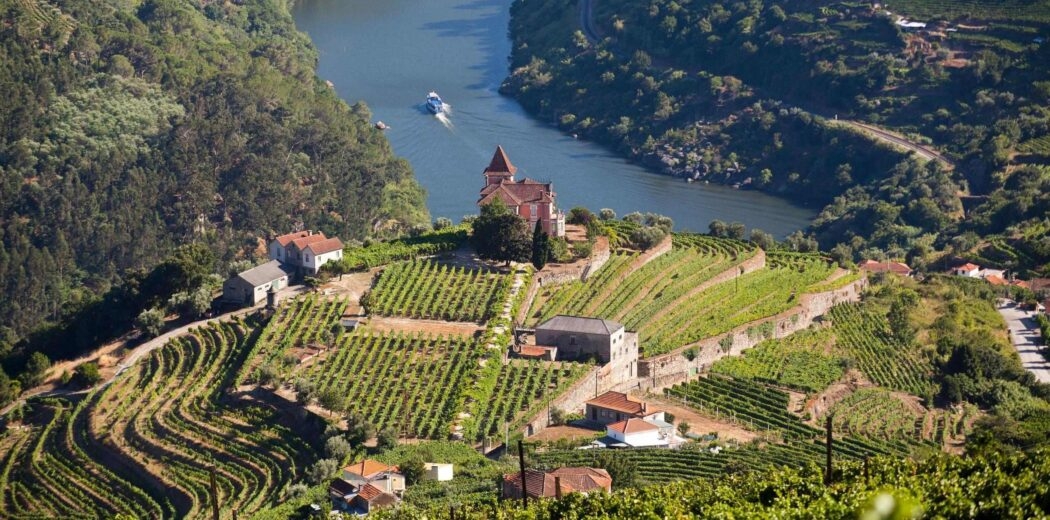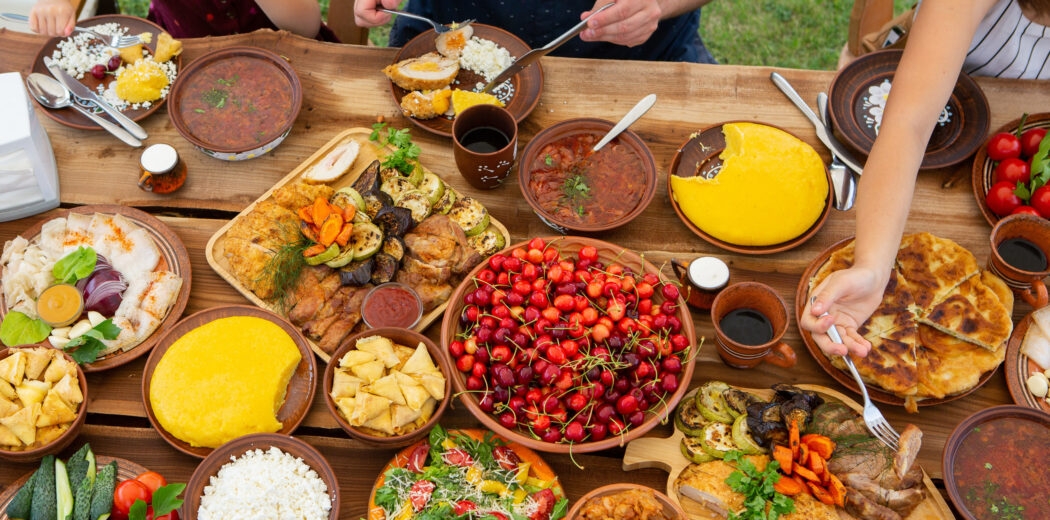The Highlights of Northern Ireland
This 12-day trip introduces you to the beauty of Northern Ireland from Donegal and Fermanagh to the cities of Derry and Belfast, finishing in the Republic of Ireland’s intoxicating capital, Dublin.
Trip highlights
- Visit the prehistoric megalithic sites of the Boyne Valley
- Tour the UNESCO World Heritage Marble Arch Caves Geopark
- Explore Glenveagh National Park and the 19th century Glenveagh Castle
- Discover the delights of Northern Ireland’s capital, Belfast
- See the natural wonder of Northern Ireland, the Giant's Causeway
- Enjoy a connoisseur experience at the Guinness Storehouse in Dublin
Our bespoke trips include
We design one-of-a-kind journeys incorporating luxury in all its forms. Our bespoke trips include:
- Luxury accommodation throughout
- Privately guided tours
- Private transfers
- Meticulously selected experiences
- Expertise and support from your Jacada Concierge

Itinerary in detail
Every Jacada trip is tailored to your personal preferences and interests. Below you’ll find a sample itinerary to inspire your own custom-designed journey.
Days 1–3
An Irish introduction in Lough Erne via Boyne Valley
Your adventure starts as you travel through the scenic Boyne Valley to Lough Erne. The Boyne Valley, located in the northeast of Ireland and encompassing counties Louth and Meath, holds a UNESCO World Heritage Site status and is the largest and one of the most important prehistoric megalithic sites in Europe. You come here for Brú na Bóinne, which includes the passage tomb of Newgrange, and for the Hill of Tara, one of the largest complexes of Celtic monuments in Europe.
You then continue to two connected lakes of Lough Erne in the Fermanagh Lakelands to stay at a resort on a 600-acre peninsula, perfect for exploring more of northwest Ireland.

See the sights
History
Gardens
Caves

A visit to Enniskillen Castle
Enniskillen Castle, situated beside the River Erne in County Fermanagh, was built almost 600 years ago by the ruling Gaelic Maguires. Guarding one of the few passes into Ulster, it has been strategically important throughout its history. Today, the historic site houses two museums, Fermanagh County Museum and The Inniskillings Museum.

A tour of Florence Court
Take a tour of this amazingly preserved Georgian home, one of the most important in Ireland. If you’ve time, walk one of the trails in the gardens and take in the beautiful Fermanagh countryside.

A discovery of Marble Arch Caves Geopark
This UNESCO Heritage site is host to magnificent natural and man-made attractions including Tully Castle (a 17th-century ruin), Gortmaconnell Rock, Cuilcagh Mountain Boardwalk, Money Gashel Cashel (remains of a fortified settlement), Drumlane Abbey, Pollnagollum Cave and Whitefather’s Cave, as well as the titular Marble Arch Caves which you can enjoy a guided tour through.
A private transfer to Lough Eske via Slieve League

Sweeping down from the mountain of Slieve League are some of the highest cliffs in the world. From the top it’s a steep 609m to the Atlantic down below. The nearby centre is full of information on the cliffs and surrounding areas.
You’ll also stop by Belleek Pottery. Nestled on the banks of the River Erne, the striking building is home to the world-famous Belleek Fine Parian china. Discover the secrets that have made Belleek Pottery one of the most enduring success stories of Irish craftmanship with a tour through the workshop, talking to employees on the floor and visiting the museum.
Days 3–5
Two nights in a luxury lakeside retreat
Lough Eske, nestled in the shadow of the Blue Stack Mountains in County Donegal, is a tranquil haven of natural beauty and timeless charm. This glacial lake, renowned for its crystal-clear waters and serene surroundings, is a retreat for those seeking peace or outdoor adventure. Encircled by lush woodlands, scenic trails, and picturesque hills, the area offers opportunities for hiking, cycling, and fishing. At its heart lies the stunning Lough Eske Castle, a luxurious 17th-century estate now transformed into a world-class hotel.

Explore more
The great outdoors
Local culture
Traditional tweed

Glenveagh National Park and Glenveagh Castle visit
The largest tract of land in the wildest part of Donegal, Glenveagh National Park incorporates moorland, mountains, lakes and woods within its 40,000 acres of wilderness. You may be lucky enough to catch sight of soaring golden eagles which have been reintroduced into the area or chance upon a shy red deer. Within the park is Glenveagh Castle, a 19th-century castellated mansion built between 1867 and 1873. It was designed by John Townsend Trench, who appears to have imitated the style of earlier Irish tower houses.

Glencolmcille Folk Village visit
This folk museum is made up of six replica thatched cottages with original artifacts an utensils. Overlooking Glen Bay Beach in South West Donegal, this unique living museum was built and is maintained by locals, allowing a fascinating insight into the hardships of rural Irish life between 18-20th centuries. Don’t forget to explore the craft shops to peruse locally-made knitwear or stop by the tearoom for a bowl of warming soup and an Irish coffee.

Eddie Doherty Tweed
Eddie Doherty learnt traditional Irish weaving by hand at the age of 16. Now, 40 years later, after two long stints with large Irish fabric companies, he uses Donegal wool to handweave pure wool blankets and tweed at his home in Ardara.
Days 5–7
Northern Ireland’s second city
Northern Ireland’s second largest city continues to flourish as an artistic and cultural hub. Derry’s city centre was given a striking makeover for its year as the UK City of Culture in 2013, with the new Peace Bridge, Ebrington Square and the redevelopment of the waterfront and Guildhall area making the most of the city’s splendid riverside setting. There’s lots of history to absorb here, from the Siege of Derry to the Battle of the Bogside and Bloody Sunday. A stroll around the 17th-century city walls that encircle the city is a must, as is a tour of the Bogside murals, along with taking in the burgeoning live music scene in the city’s lively pubs.

Visiting the Giant’s Causeway

Shrouded in legend, this UNESCO World Heritage site is one of the greatest natural wonders in the United Kingdom. Thousands of hexagonal basalt columns stand against the wild winds and battering waves of the North Atlantic Ocean. Legend has it that the natural phenomenon was created by the Irish giant Finn MacCool after he was challenged to a fight by the Scottish giant Benandonner. Whether the honeycomb rocks were created by giants or intense volcanic activity is up to you to decide.
Getting active
escape the crowds
across the water
historic ruins

Carrick-a-Rede rope bridge
The Carrick-a-Rede rope bridge connects the mainland to the minuscule island of Carrickarede. At 30-metres above sea level, the elevated bridge was first made by salmon fishermen over 250 years ago. Once on the island, you can spot the island’s only building, a small fisherman’s cottage and look out onto the Atlantic Ocean.

Away A ‘Wee’ Walk
Get off the beaten track on a magnificent cliff walk to the Giant’s Causeway that will take your breath away. Escape the crowds and enjoy more of this coast than the average tourist ever sees. This walk is six miles long and once you reach the iconic Giant’s Causeway, you will have some time to explore the stunning natural rock formation.

Dunluce Castle exploration
An atmospheric ruin, set against on a steep cliff edge in north County Antrim, Dunlace Castle is imbued with myth and fable. The castle dates back to 1500, when it was made by the MacQuillan family. A local legend says that the castle was abandoned after the kitchen collapsed into the sea, taking the cooks with it. The mystery of the castle has inspired writers and filmmakers alike: from C.S. Lewis’s Narnia to the TV series Game Of Thrones.
Days 7–10
The capital of Northern Ireland
Shaped by the turbulent events of the 20th century, the capital city of Northern Ireland is both historically and politically important. Over recent years, Belfast has been shaking off its troubled reputation and today the city vibrant and exciting, with lots to offer visitors, and plenty of warmth and unity. Head to the Cathedral Quarter to soak up lively scenes where street performers harmonise with locals and visitors alike to the sound of traditional folk song.

Where you could stay
The highlights of Belfast
sightseeing
Titanic history
Local landmarks

Belfast Black Taxi Tour
Enjoy a Black Taxi tour of the city with a local and learn more about the history of the city as you go. See the famous Catholic and Protestant murals that depict the colourful history of the city. Learn about what life was like in the city during the Troubles and sign your name on the world famous peacewall.

Titanic Belfast
Located in the heart of Belfast, on the very slipways where the Titanic was built, Titanic Belfast is spread over nine galleries, with multiple dimensions to the exhibition. Drawing together special effects, dark rides, full-scale reconstructions and innovative interactive features to explore the Titanic story in a fresh and insightful way; from her conception in Belfast in the early 1900s, through her construction and launch, to her infamous maiden voyage and catastrophic demise. The journey goes beyond the aftermath of the sinking, to the discovery of the wreck and continues into the present day with a live undersea exploration centre.

Cave Hill and Belfast Castle
For generations, Cave Hill has been synonymous with Belfast, with its imposing outline visible throughout the city. Named for the five caves located on the side of the cliffs, the area contains a wealth of natural, archaeological and historical features, including Belfast Castle, built in the 1860s and one of the city’s most famous landmarks. The estate contains landscaped gardens and mature mixed woodland and offers superb views of the city from a variety of vantage points.
Bread making class in Strangford Lough

You are invited to join in a bread making class an 18th-century thatched cottage on the shores of beautiful Strangford Lough in County Down. Traditional griddle breads such as soda bread, potato bread, and wheaten breads are made in the farmhouse kitchen here and the local bread maker will be show you how to make these breads using local ingredients and traditional methods. You will be given a copy of all the traditional bread recipes so that you can try making them at home. Afterwards, enjoy a tasting of local gins.
Days 10–12
Two final nights discovering Dublin
Both the Republic of Ireland’s capital and largest city, Dublin is truly larger than life. A kaleidoscope of history and modernity, it is generous in its architectural and cultural offerings. Just a quick turn down a cosy laneway could lead you to the bustling restaurants and pubs of Temple Bar, towards the ancient, yet indominable walls of Dublin Castle, or to Christ Church Cathedral, Dublin’s oldest building and a place of pilgrimage for almost 1,000 years.

Where you could stay
Exploring the city
the black stuff
Trinity College
Irish music

Guinness Storehouse connoisseur experience
A five-star Guinness tasting experience for the ultimate Guinness connoisseur. This intimate session takes place in a private bar where expert staff will be your personal guides on a sensory journey filled with tales and traditions.

The old Library and the Book of Kells exhibition
A must see for all visitors to Dublin. The Book of Kells is Ireland’s national treasure, a 9th-century manuscript documenting the four Gospels of the life of Jesus Christ. The exhibition is on display inside the 18th-century Old Library building and includes access one of the world’s most beautiful libraries, the Long Room, which displays 250,000 of Trinity College’s oldest and rarest books.

A musical pub tour
Dublin’s musical pub crawl takes participants to two city centre pubs where musicians, also acting as your guides along the route, demonstrate their Irish traditional instruments and tell the story of Irish music. This is a great way to participate in some Irish ‘craic’ (fun), song and a couple of pints.
As usual, this was a wonderfully curated trip. While no one can see & do everything during a trip of less than 4 weeks, it felt like we got close. Ireland is a magical country, full of beauty & history, and we would all do well to emulate the friendly people we met everywhere who are the heart of a…
Why book with Jacada

Personalised design
We’ll plan your trip around your personal interests, tastes and preferences, providing honest advice based on first-hand knowledge.

Authentic experiences
Our expert guides and brilliant concierges are hand-picked for their ability to bring your destination to life with care and passion.

Positive Impact
We seek out unforgettable experiences that benefit both local communities and the environment.






























